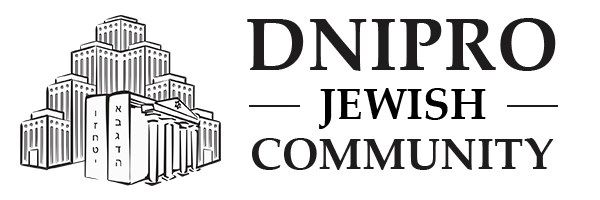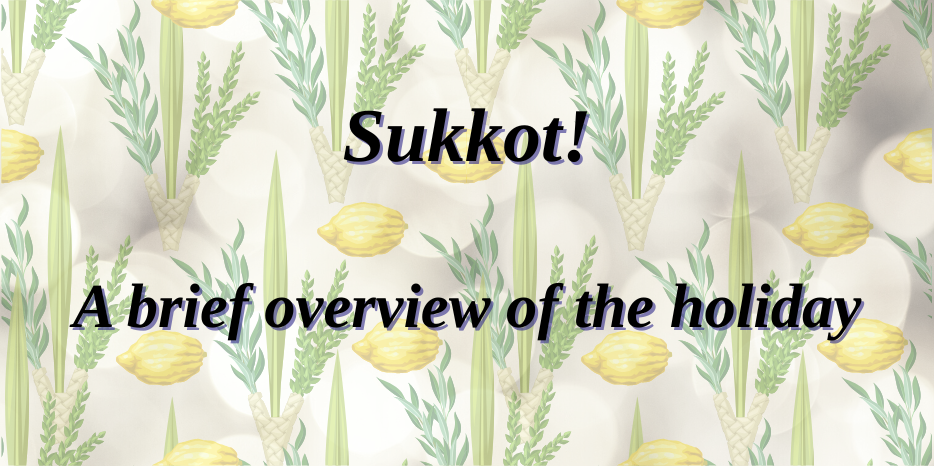Four days after Yom Kippur, on the evening of the 14th of the month of Tishrei (this year – on the evening of October 6th), a new stage of the Tishrei festivities begins – the time of the Sukkot holiday, followed by Shemini Atzeret and Simchat Torah. But the preparation for Sukkot begins immediately after Yom Kippur, emphasizing the continuity of this period – it is customary to start building the booths on the very night after the Day of Atonement ends.
We will try to provide our readers with information about the main elements of the holiday in a concise form, but we recommend contacting synagogues for more precise guidance from qualified and experienced specialists, as the details of fulfilling the Sukkot commandments are complex and numerous.
Sukkot is fundamentally different from the first holidays of the month of Tishrei, where the main motif was repentance, teshuvah, and Judgment. If the beginning of Tishrei is permeated with an atmosphere of penitence, a striving for spiritual self-elevation and ascent to the Divine, the second part of the month has a different meaning – to bring the Divine into the world, to become so imbued with everything He commanded that it evokes great joy.
The essence of this radical transition is perfectly expressed by the Book of Psalms: “Light is sown for the righteous, and joy for the upright in heart.” After our hearts were straightened on Yom Kippur, the joy and tranquility of the Sukkot holiday arrive.
Indeed, when speaking about Sukkot, the Torah mentions joy three times:
“And you shall rejoice before the Lord for seven days” (Vayikra, 23);
“And you shall rejoice in your feast…” (Devarim, 16);
“And you shall be only joyful” (Devarim, 16).
Therefore, in the Holy Books, wherever it simply says “the festival,” it refers to the festival of Sukkot.
In the Torah, this holiday is also called the “Feast of the Harvest” – as it occurs precisely at this time. It begins on the 15th of Tishrei and lasts for seven days, and the eighth day is an independent holiday called Shemini Atzeret, when we no longer sit in the “sukkah” – the booth that concentrates the entire essence of the Sukkot holiday.
Shemini Atzeret is called so because the Torah says about it: “On the eighth day [shemini] it shall be a solemn assembly [atzeret] for you; you shall not do any laborious work” (Bamidbar, 29). Literally, the word atzeret means “a detention” or “a stopping.” A midrash explains why the holiday is called this: “The Almighty said to the Jews at the conclusion of the seven days of Sukkot: ‘Please, stay with Me for one more day – it is difficult for Me to part with you!..'”
In all countries outside the Land of Israel, Shemini Atzeret is the eighth day after the start of Sukkot, and Simchat Torah is the ninth, according to the rule of doubling festive days in the Diaspora. (In the Land of Israel, Shemini Atzeret is combined with Simchat Torah).
The first two days of Sukkot have the status of “Yom Tov” (in the Land of Israel – only the first one), and the days between them and Shemini Atzeret are defined as “Chol HaMoed,” meaning “the intermediate festival days.”
Sukkot is one of the three holidays during the year for which the Torah commands all the children of Israel to gather in Jerusalem and celebrate there.
Sukkot is very rich in commandments. The main ones observed today can be grouped into two categories – those related to the sukkah and those related to the “Four Species.” In the times when the Jerusalem Temple stood (and when it will be rebuilt), the commandments of festive offerings and offerings expressing festive joy were in effect during Sukkot.
However, even in the most remote country, the celebration of Sukkot always contains motifs that refer us back to the times of the Temple service. This is especially evident in the “Simchat Beit HaSho’eva” – the rejoicing of the Water-Drawing Ceremony (nisuch ha-mayim) – and in the ancient custom, instituted by the prophets, of beating willow branches on the ground on Hoshana Rabbah, the day that concludes Sukkot.
Hoshana Rabbah, as it were, restores the connection with the motifs of the beginning of Tishrei, with the motifs of Judgment and repentance, for Jewish tradition states that on Sukkot, the Almighty judges not each individual, but the entire world as a whole, deciding how much rain will fall this year, how much fruit the trees will bear, what the harvest will be like. But on Hoshana Rabbah, in Heaven, all personal matters initiated on Rosh Hashanah are “closed” – “on the seventh day of the festival, the final verdict is sealed.”
Therefore, Hoshana Rabbah partly resembles Yom Kippur. As on Yom Kippur, repentance and prayer are especially important on this day. On this day, several prayers – Hoshanot – are recited; willow branches, also called Hoshanot, are taken up, and the Torah scroll lying on the bimah in the center of the synagogue is circled seven times, similar to how the priests in the Temple would circle the altar on this day.
We have previously discussed in more detail what the sukkah should be like, how to properly fulfill the commandments regarding the booth, and the commandment of the “Four Species.”




